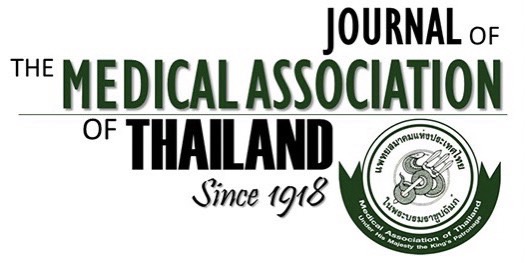Cost Effectiveness of Concurrent Chemoradiation in Comparison with Radiation Alone in Locally Advanced Cervical Cancer
Sumonmal Manusirivithaya, MD, MSc*, Manit Sripramote, MD, MSc*, Siriwan Tangjitgamol, MD*, Nopawan Sanjareonsuttikul, MD, MSc**, Pagaporn Pisarnturakit, DBS, MSc***
Affiliation : * Department of Obstetrics and Gynecology, Bangkok Metropolitan Administration Medical College and Vajira Hospital ** Deparment of Physical and Rehabilitation Medicine, Ramathibodi Hospital, Mahidol University *** Department of Community Dentistry, Faculty of Dentistry, Chulalongkorn University
Introduction: Concurrent chemoradiation has been advocated to be more effective than radiation alone in
the treatment of cervical cancer. However, it certainly has more side effects. Hence, it is worthwhile to
investigate the cost-effectiveness (CE) of concurrent chemoradiation in comparison with radiation alone in
locally advanced cervical cancer.
Materials and Methods : The treatment of cervical cancer was modeled using the decision tree where the
treatment option would be either concurrent chemoradiation or radiation alone. Patients receiving each
treatment had different risks of tumor recurrence. Costs in this analysis were separated into four major
categories: costs for treatment of cervical cancer, costs for treatment of major side effects, costs for follow up
cancer patients, and costs for diagnosis including supportive care of recurrent cervical cancer. Charges
were used for the costs of chemotherapy, radiotherapy, drugs, and accessories. Unit cost was used for the
costs of laboratory investigations, in-patient and out-patient services. Costs incurred after the first year were
discounted at an annual rate of 5%. The benefit was measured as months of life survived. The present study
evaluated the patients to 5 years after complete treatment.
Results : The CE ratio in the concurrent chemoradiation group was 2,855 and 1,835 Baht/month survived if
the chemotherapy was given as in-patient and out-patient respectively. The CE ratio in the radiation group
equaled 2,366 Baht/month survived. For the sensitivity analysis, in the situation that chemoradiation was
not much better than radiation alone in terms that the recurrent rate from chemoradiation group was not
more than 20% lower than the radiation group, radiation therapy alone would be more cost effective even if
chemotherapy was given as an out-patient basis.
Conclusion : Radiation alone was more cost effective than chemoradiation in the treatment of cervical
cancer. Nevertheless, if chemotherapy was administered on an out-patient basis, chemoradiation will be
more cost effective only if the recurrent rate from the chemoradiation group was more than 20% lower than
the radiation group.
Keywords : Cost-effectiveness, Cost-utility, Cervical cancer, Chemoradiation, Radiation



